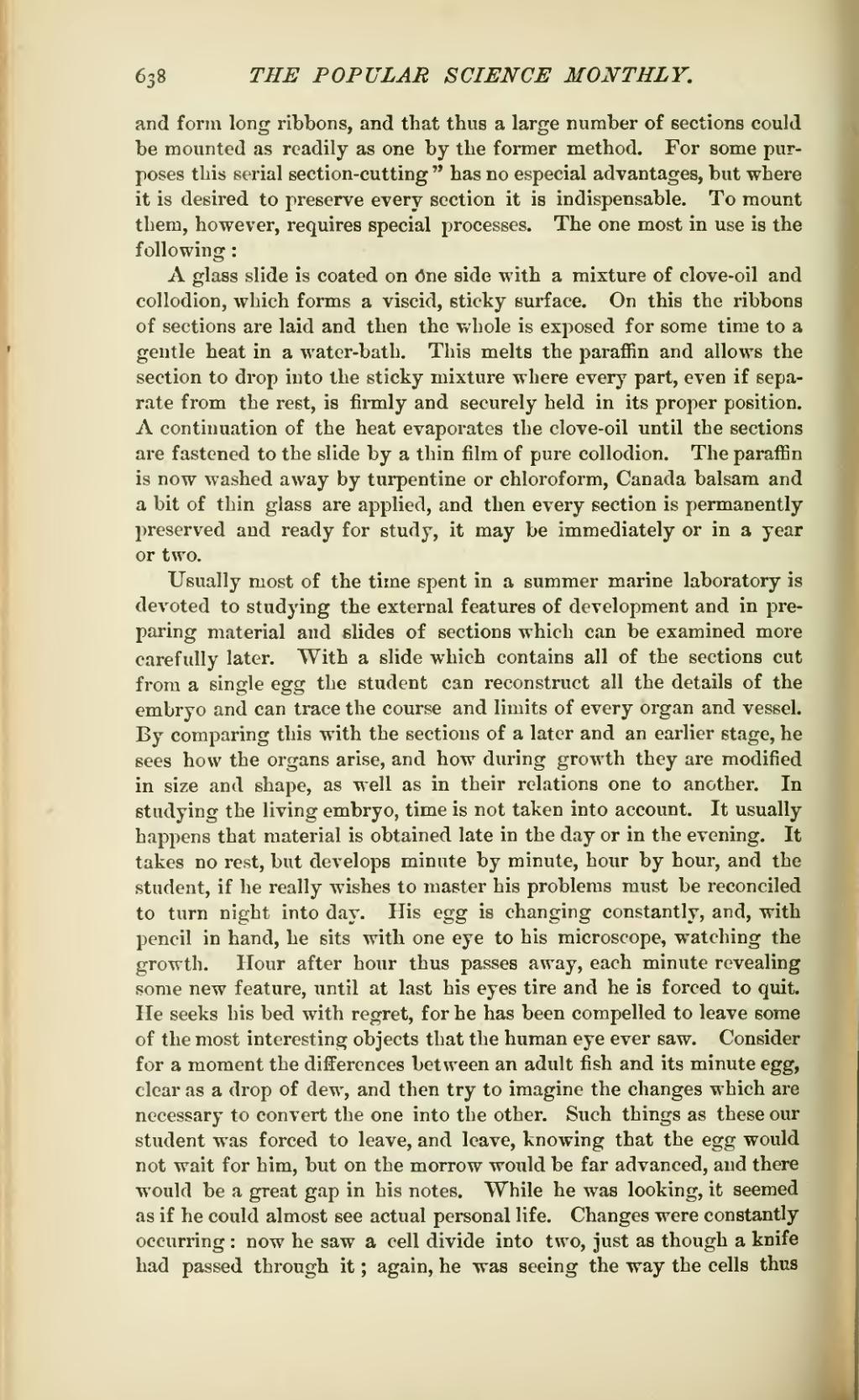and form long ribbons, and that thus a large number of sections could be mounted as readily as one by the former method. For some purposes this serial section-cutting" has no especial advantages, but where it is desired to preserve every section it is indispensable. To mount them, however, requires special processes. The one most in use is the following:
A glass slide is coated on one side with a mixture of clove-oil and collodion, which forms a viscid, sticky surface. On this the ribbons of sections are laid and then the whole is exposed for some time to a gentle heat in a water-bath. This melts the paraffin and allows the section to drop into the sticky mixture where every part, even if separate from the rest, is firmly and securely held in its proper position. A continuation of the heat evaporates the clove-oil until the sections are fastened to the slide by a thin film of pure collodion. The paraffin is now washed away by turpentine or chloroform, Canada balsam and a bit of thin glass are applied, and then every section is permanently preserved and ready for study, it may be immediately or in a year or two.
Usually most of the time spent in a summer marine laboratory is devoted to studying the external features of development and in preparing material and slides of sections which can be examined more carefully later. With a slide which contains all of the sections cut from a single egg the student can reconstruct all the details of the embryo and can trace the course and limits of every organ and vessel. By comparing this with the sections of a later and an earlier stage, he sees how the organs arise, and how during growth they are modified in size and shape, as well as in their relations one to another. In studying the living embryo, time is not taken into account. It usually happens that material is obtained late in the day or in the evening. It takes no rest, but develops minute by minute, hour by hour, and the student, if he really wishes to master his problems must be reconciled to turn night into day. His egg is changing constantly, and, with pencil in hand, he sits with one eye to his microscope, watching the growth. Hour after hour thus passes away, each minute revealing some new feature, until at last his eyes tire and he is forced to quit. He seeks his bed with regret, for he has been compelled to leave some of the most interesting objects that the human eye ever saw. Consider for a moment the differences between an adult fish and its minute egg, clear as a drop of dew, and then try to imagine the changes which are necessary to convert the one into the other. Such things as these our student was forced to leave, and leave, knowing that the egg would not wait for him, but on the morrow would be far advanced, and there would be a great gap in his notes. While he was looking, it seemed as if he could almost see actual personal life. Changes were constantly occurring: now he saw a cell divide into two, just as though a knife had passed through it; again, he was seeing the way the cells thus
